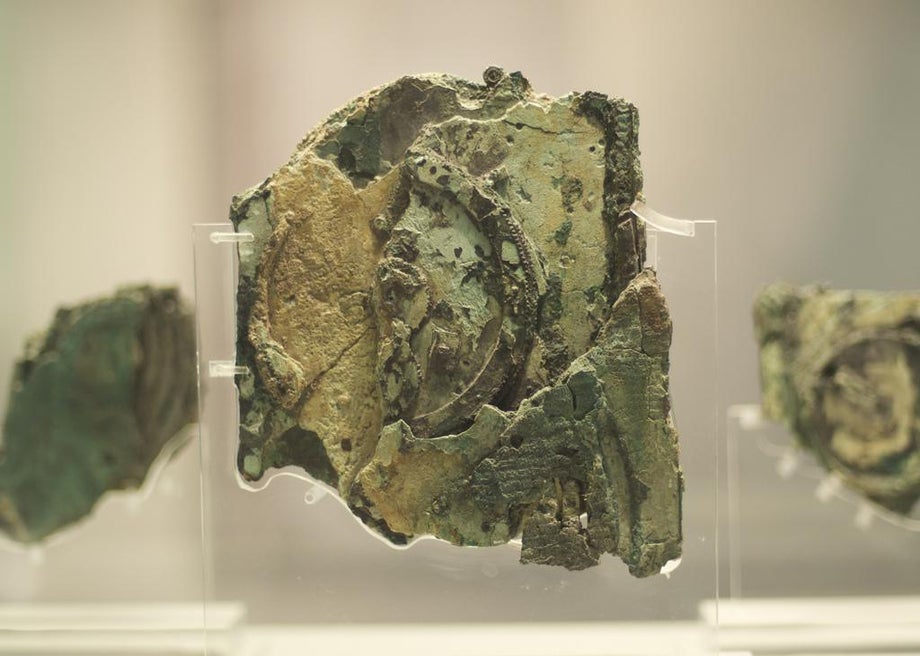Greek Sponge Divers find the Worlds Oldest Analog Computer
When you ask someone who invented the computer they might say, Bill Gates or Steve Jobs. They would, of course, be wrong. Perhaps they might mention Alan Turing (who proposed a “Universal Computing Museum”) or the US Navy’s WWII era Torpedo Data Computer. But computers, which were initially conceived of as calculating devices, are much older than that and older than the modern world.
An analog computer, an old Greek device designed for the calculation of astronomical position, is the oldest Antikythera mechanism computer in the world. And now media outlets are reporting that a lost piece, which somehow survived looters, has been discovered on the Aegean Seabed.
The Antikythera Mechanism was lost over 2,200 years ago when the cargo ship carrying it was shipwrecked off the coast of the small Greek island of Antikythera (which is located between Kythera and Crete).

The Mechanism was initially discovered in 1901 when Greek sponge divers found an encrusted greenish lump. They brought the mechanism, which they believed to be a rock, to archaeologist Valerios Stais at the National Archaeological Museum in Athens.
Over the ensuing decades the site was looted, trampled on by explorers, and, in 1976, the famous French explorer Jean-Jacques Cousteau inadvertently destroyed much of what remained of the ship’s hull.
Initially, no one knew to want the lump was. Two millennia had eaten away at the ship and its cargo. Stais’ cousin, Spyridon Stais, a former mathematician, was the first to identify the gears in the mechanism.
It was only with the development of advanced x-ray technology and the collaboration of numerous individuals (from Cousteau to modern historians of science like Alexander Jones) that the heavily corroded rock was revealed to be a technologically advanced calculator.
How advanced? The second century BCE Mechanism could do basic math, calculate the movements of the sun and moon, track the movements of the constellations and planets, and predict eclipses and equinoxes.
It contains over thirty hand-worked cogs, dozens more than the average luxury Swiss watch. It may not have the faculties of an iPhone but it is more than a simple calculator.
In 2012, almost 50 years after Cousteau’s excavations, a new team of underwater archaeologists returned to re-examine the site.
They discovered hundreds of previously unnoted artifacts, including bronze and marble statues, furniture, coins, and a sarcophagus lid. But last year, on the seabed, they discovered something else: an encrusted corroded disk about 8cm in diameter.
X-ray analysis has revealed that the disk bears an engraving of the zodiac sign Taurus, the bull.
The discovery of a piece of the world’s oldest analog computer would be a huge and remarkable discovery on its own terms. But it has additional significance in what it can tell us about the development of the field of archaeology itself.
As Sarah Bond, an associate professor of Classics at the University of Iowa, told The Daily Beast “The Antikythera Mechanism is an important object in the historical record of ancient technology, but is also a prism for tracking the development of archaeology as a professional field … It reveals the advanced astrological instruments created and used by ancient engineers, but the protracted nature of the undersea dig reveals archaeological advances in scanning, 3D modeling, and many other sophisticated approaches in reconstructing and analyzing ‘the computer’.” Elsewhere Bond has written about the unseen labor of the divers who engaged in the risky work that discovered the original Mechanism.
Other scholars have exhibited concern that the discovery of the new disk is being sensationalized. On social media, David Meadows and Michael Press have rightly pointed out that the year-old discovery is only making news because of the sensational claim that it belongs to the Antikythera Mechanism.
It is difficult to say precisely what this new piece is; it might be part of the original Antikythera Mechanism or part of a second similar device.
The presence of the bull engraving suggests that it may have predicted the position of the constellation of Taurus but it is difficult to say.
While scientific study continues, the discovery has drawn attention to both the existence of this ancient ‘calculator’ and its amazing history





